THE NEXT GENERATION OF MICRONEEDLES: HARNESSING A BILLION YEARS OF EVOLUTION


DE-RISKING COMBINATION PRODUCT REGISTRATION FOR SEMI-SOLIDS


THE NEXT GENERATION OF MICRONEEDLES: HARNESSING A BILLION YEARS OF EVOLUTION


DE-RISKING COMBINATION PRODUCT REGISTRATION FOR SEMI-SOLIDS

DERMAL, TRANSDERMAL & MICRONEEDLES
“PRESERVATIVE FREE” –THE SKIN MICROBIOME’S CLOSE FRIEND

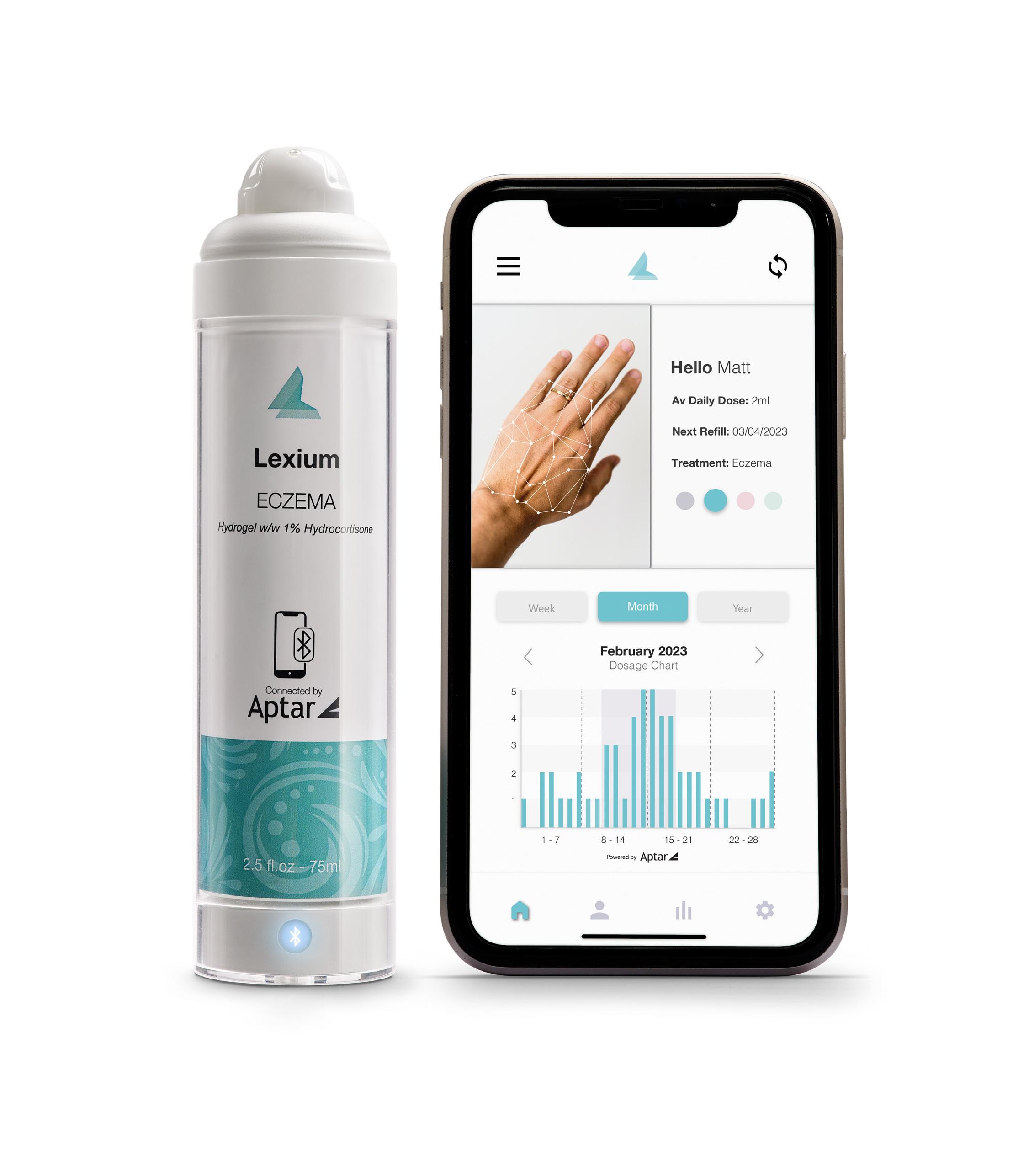
ONdrugDelivery Issue No 144, March 31st, 2023
This edition is one in the ONdrugDelivery series of publications. Each issue focuses on a specific topic within the field of drug delivery, and is supported by industry leaders in that field.
EDITORIAL CALENDAR
Apr 2023 Pulmonary & Nasal Drug Delivery
Apr/May Drug Delivery & Environmental Sustainability
May Injectable Drug Delivery: Formulations & Devices
May/Jun Novel Oral Delivery Systems
Jun Connecting Drug Delivery
Jun/Jul Industrialising Drug Delivery
Sep Wearable Injectors
Oct Prefilled Syringes & Injection Devices
Oct/Nov Drug Delivery & Environmental Sustainability
Nov Pulmonary & Nasal Drug Delivery
Dec Connecting Drug Delivery
Jan 2024 Prefilled Syringes & Injection Devices
Feb Skin Drug Delivery:
Dermal, Transdermal & Microneedles
Mar Ophthalmic Drug Delivery
Apr Pulmonary & Nasal Drug Delivery
EDITORIAL:
Guy Furness, Proprietor & Publisher
E: guy.furness@ondrugdelivery.com
CREATIVE DESIGN:
Simon Smith, Creative Director (Freelance)
E: simon.smith@ondrugdelivery.com
SUBSCRIPTIONS:
Audrey Furness (subscriptions@ondrugdelivery.com)
Print + Digital subscription: £99/year + postage
Digital Only subscription: free.
ADVERTISING:
Guy Furness (guy.furness@ondrugdelivery.com)
ONdrugDelivery is published by Frederick Furness Publishing Ltd
The Candlemakers, West Street, Lewes East Sussex, BN7 2NZ, United Kingdom
T: +44 1273 47 28 28
Registered in England: Company No 8348388
ISSN 2049-145X print / ISSN 2049-1468 pdf
05 -09
The Next Generation of Microneedles: Harnessing a Billion Years of Evolution
Gabriel Villar, Principal Biophysicist; and Ethan Miller, Senior Biophysicist
Springboard
12 - 15
16 - 18
19 - 22
Unlocking the Potential of Microneedle Technology
Bart van Oorschot, Chief Technology Officer; and Maarten Smit, Design Engineer uPATCH
Say “No More” to Needles: Needle-Free Self-Injection Technology for Painless, Better Care
Alina Su, Chief Executive Officer and Co-Founder
NovaXS
Interview – De-Risking Combination Product Registration for Semi-Solids with Aptar Pharma’s Airless+ System
Stefan Hellbardt, Vice-President Business Development and Scientific Affairs
Aptar Pharma
24 - 27
“Preservative Free” – The Skin Microbiome’s Close Friend Marie-Christine Klein, Head of Development & Regulatory Affairs; Andreas Bilstein, General Manager; and Julia Krüger, Head of Business Development & Sales URSATEC
ONdrugDelivery Magazine is printed sustainably by Newman Thomson Ltd, West Sussex, UK, using Forestry Stewardship Council® certified recycled paper, vegetable-based inks, biodegradable laminates and carbon balanced materials offset via the World Land Trust™ following ISO140001 processes.

Copyright © 2023 Frederick Furness Publishing Ltd
SUSTAINABLY
The ONdrugDelivery logo is a registered trademark of Frederick Furness Publishing Ltd.
The views and opinions expressed in this issue are those of the authors. Due care has been used in producing this publication, but the publisher makes no claim that it is free of error. Nor does the publisher accept liability for the consequences of any decision or action taken (or not taken) as a result of any information contained in this publication.
Front cover image courtesy of Springboard (see Springboard’s article in this issue, p 5). Reproduced with kind permission.
www.ondrugdelivery.com/subscribe
In this article, Gabriel Villar, PhD, Principal Biophysicist, and Ethan Miller, PhD, Senior Biophysicist, both of Springboard, consider examples of nature’s solutions to four challenges faced by microneedles for drug delivery. For each challenge, the authors explain how a natural organism has tackled it and what lessons may be directly applied to microneedle design.
Many people are afraid of needles, with a significant number experiencing such an aversion to them that they will avoid seeking medical care for fear of injection.1 The invention of a needle so thin and short that it is barely visible to the naked eye, called a microneedle, would be welcomed by the needle-phobic and bring other notable benefits, such as near-painless injections, easy self-administration and the freedom to dispose of the device with a negligible sharps risk. Furthermore, such a device would be ideally suited to the administration of drugs into the skin, which may advantageously induce a greater immune response when administering vaccines2 and avoids firstpass metabolism.3,4 These benefits are the driving force behind the predicted growth of the microneedle transdermal drug delivery market from US$5.6 billion (£4.6 billion) in 2020 to $8.0 billion by 2028.5
These motivating factors have resulted in the investment of a great deal of effort into the development of microneedle-based drug delivery devices.6 Most are one of four types (solid, coated, hollow or dissolving), but many less-common variants have been investigated.
However, only a small number of therapeutic microneedle products have made it to market so far,7 such as the Soluvia™ injector by BD (NJ, US) and
the MicronJet™ by NanoPass (Nes Ziona, Israel), that can deliver consistent and painless intradermal injections of drugs and vaccines.8 Sanofi’s IDflu®/Intanza® has also been commercialised worldwide for the delivery of influenza vaccines.8
A growing number of microneedle technologies for the delivery of drugs and vaccines are in clinical trials. For example, PharmaTher (Toronto, Canada) and TSRL Inc (MI, US) are co-developing a microneedle patch to deliver psychedelics and antivirals;9 Radius Health (MA, US) and Kindeva Drug Delivery (MN, US) are evaluating a solid microneedle device for osteoporosis;10 and Micron Biomedical (GA, US) is running a clinical trial for a measles-rubella vaccine administered via microneedles.11
The novelty of microneedles brings many challenges and, despite good progress, some of these remain to be overcome before this technology sees widespread adoption for drug delivery. The spectrum of challenges has been well documented elsewhere,6 and ranges from difficulties in reproducible manufacturing to ensuring reliable delivery of a complete dose.
The first step to solving most problems is to consider whether they may have been solved already. Even if no prior solutions are a perfect fit, some may be readily adaptable to the present challenge or serve as inspiration to resolve the issue in a drastically different
Dr Gabriel Villar
Principal Biophysicist
T: +44 1223 607 468
E: gabriel.villar@springboard.pro
Dr Ethan Miller
Senior Biophysicist


T: +44 1223 856463
E: ethan.miller@springboard.pro
Springboard Pro Ltd
St John’s Innovation Centre
Cowley Road
Cambridge
CB4 0WS
United Kingdom
www.springboard.pro
“An ever-bountiful source of solutions and inspiration is to be found in the natural world, in which ruthless evolution over millions of years has created countless necessarily elegant technical solutions to many problems.”
way. An ever-bountiful source of solutions and inspiration is to be found in the natural world, in which ruthless evolution over millions of years has created countless necessarily elegant technical solutions to many problems.
Through natural selection, mosquitoes have developed a sophisticated apparatus to effectively and painlessly penetrate the skin of animals and humans to feed on their blood.12 This apparatus consists of a
bundle, or “fascicle”, of fine tools called “stylets” that are housed within the mosquito’s proboscis. Together, these stylets comprise a natural microneedle 2 mm long and a mere 20 µm in diameter.13 But how does the mosquito use such a delicate structure to penetrate the skin? The answer is partly in a mechanical feature, and partly in how the fascicle is deployed.

First, the structure has micro-serrations that reduce the contact area between the fascicle and skin tissue, which significantly
lowers insertion forces (Figure 1). Studies have found that a living mosquito fascicle requires an insertion force of around 16 µN, which is approximately one thousandth of the force required to insert synthetic ultra-sharp microneedles.14
Second, mosquitoes deploy the fascicle in a way that makes good use of those serrations. Having probed for an ideal spot to penetrate, the mosquito anchors its fascicle onto the skin, then oscillates its head back and forth in a sawing motion to drive the fascicle through the skin. Even this sawing motion is carefully modulated to optimise penetration, starting at 17 Hz and slowing to 6 Hz as the needle is driven deeper.13 Using finite element method (FEM) simulation and skinpenetration models,15,16 researchers have already started to develop mosquito-inspired microneedles that have serrated tips and use co-operative vibration to reduce skinpenetration forces. However, such features have yet to be exploited clinically.
Not all microneedles in nature have developed to be painless. The caterpillar Parasa consocia is covered in hollow microneedle spines that pierce any wouldbe predators and inject a pain-inducing venom. They feature several intriguing microstructures, including a tapered geometry, a side-open tip, a barbed surface and neck-like grooves; but perhaps the most intriguing feature is a subtle one.
Because they are so fine, microneedles can be particularly susceptible to bending and compressive buckling failure. Where the mosquito’s fascicle uses serration and vibration to avoid buckling, the caterpillar’s spine employs a different strategy. The magnitude of buckling is directly related to the Young’s modulus of the material,17 and both scanning electron microscope (SEM) imaging and atomic force spectroscopy have revealed that the Young’s modulus of each caterpillar spine increases progressively from base to tip (Figure 2).18 This gradated material property, together with the geometry of the spine, means that the spines can withstand compressive buckling of up to 3 mN before fracture, which is an order of magnitude greater than the insertion forces required for these ultra-sharp needles to penetrate animal skin.18 Applying these lessons to synthetic microneedles may make them more mechanically robust to a common mode of failure.

Some medical conditions require not a single, rapid injection but a gradual release of a therapeutic agent over time, and microneedle patches are a promising vehicle for such sustained release.19 However, it can be difficult to ensure that a microneedle patch remains attached to the tissue, especially in regions of skin that are subject to large motions. Here, too, one may draw inspiration from nature.
Recently, a microneedle array was developed that was designed to adhere to the user using two different mechanisms, each inspired by a different animal (Figure 3).20 First, each microneedle was surrounded by microscale suction cups, which were modelled on the suckers on octopus tentacles. Second, the suction
cups and microneedles were made of a poly-dopamine hydrogel inspired by the composition of the filaments, called “byssi”, that mussels use to attach to a range of surfaces. This improved adhesion, achieved without the use of medical adhesive tape, could make microneedle patches a more viable option for the sustained release of drugs to mobile parts of the body, such as on knee joints to deliver therapeutics for osteoarthritis.23

It is generally difficult to ensure that a microneedle system delivers a complete dose of a liquid drug formulation, especially if the viscosity and surface energy of the formulation have not been carefully engineered for use with microneedles.
Fortunately, there already exists a solution that delivers a liquid formulation rapidly and reliably into animal tissue.
In a collection of species known as “rear-fanged” snakes, some of their fangs are not hollow but instead feature a groove that runs along the fang’s surface (Figure 4). When the snake bites into an animal, venom runs down the capillary channel formed between the groove and the unfortunate animal’s tissue. Understanding how this flow is driven by surface tension has allowed researchers to exploit the same effect, and further optimise it by designing synthetic microneedle “fangs” with multiple grooves on each.26 The use of solid rather than hollow microneedles for the delivery of liquid drugs improves the mechanical strength of the needles and simplifies
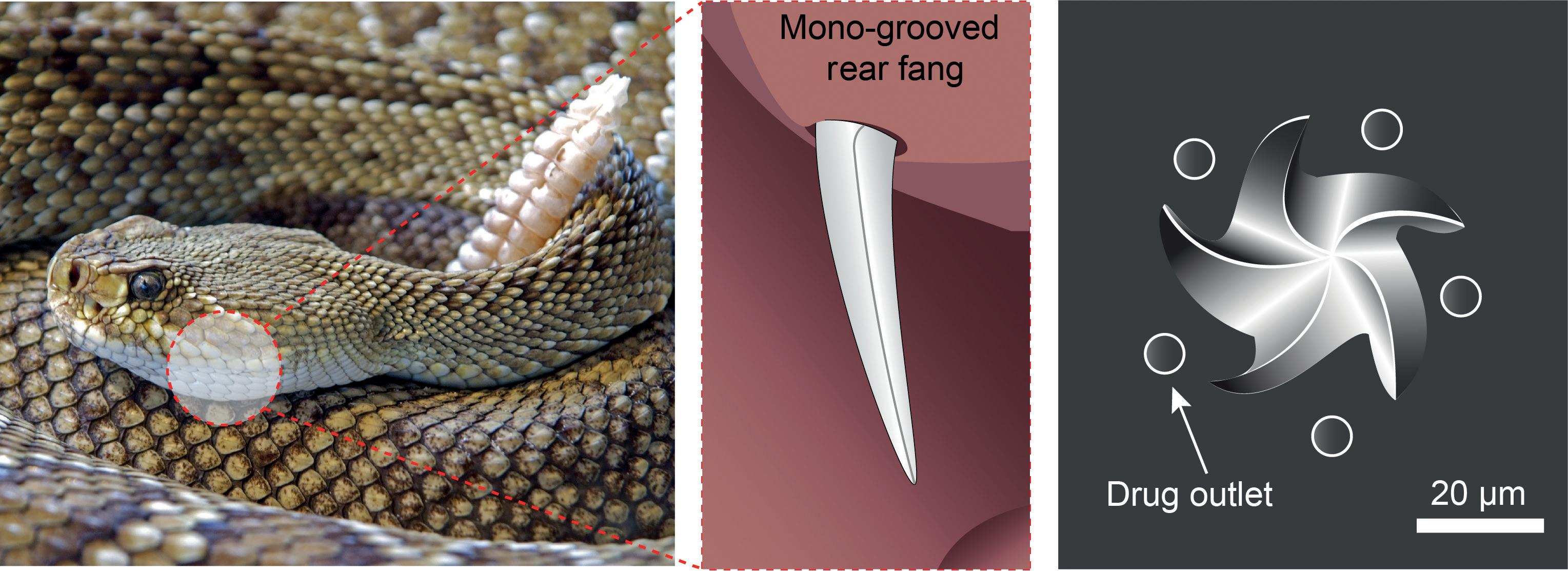 Figure 4: (A) Rear-fanged snake25 with (B) mono-grooved fangs to aid delivery of venom to prey.25 (C) Snake fang multi-grooved solid microneedles, optimised for delivery of liquid formulations.26
Figure 3: Array of microneedles (centre) with bio-inspired adhesive abilities.20 Each microneedle is surrounded by suction cups inspired by octopus tentacle suckers (left),21 and composed of an adhesive poly-dopamine hydrogel inspired by the filaments used by mussels to adhere to rocks (right).22
(A)
(B)
Figure 4: (A) Rear-fanged snake25 with (B) mono-grooved fangs to aid delivery of venom to prey.25 (C) Snake fang multi-grooved solid microneedles, optimised for delivery of liquid formulations.26
Figure 3: Array of microneedles (centre) with bio-inspired adhesive abilities.20 Each microneedle is surrounded by suction cups inspired by octopus tentacle suckers (left),21 and composed of an adhesive poly-dopamine hydrogel inspired by the filaments used by mussels to adhere to rocks (right).22
(A)
(B)
their manufacture. The technology shows promise for the delivery of fast vaccinations, being capable of inducing a robust immune response from a single administration.26
The development of a novel, successful medical device is typically a hugely ambitious undertaking. A concept that seems promising at first may fall at any number of hurdles on its way to launch; it may be let down by material properties, variability in manufacturing, reaction to sterilisation or subtle design issues that only manifest in late-stage testing. Leveraging existing solutions to closely related problems elsewhere, whether in industry or nature, can dramatically speed up product development. Technology scouting is an essential part of rapid innovation – by avoiding reinventing the wheel, it frees up resources for investment where they can have the greatest impact and reduces the time to market for solutions that patients urgently need.
Springboard is an engineering consultancy that specialises in developing devices from concept to manufacture for regulated markets. The company is an expert in creating innovative yet robust designs and solving difficult technical problems quickly. Springboard does not have internal projects, so is as fast and cost-effective as possible, and the intellectual property entirely belongs to its clients.
1. Love AS, Love RJ, “Considering Needle Phobia among Adult Patients During Mass COVID19 Vaccinations”. J Prim Care Community Health, 2021, Vol 12, Article 21501327211007393.
2. Yang J et al, “Recent advances of microneedles used towards stimuliresponsive drug delivery, disease theranostics, and bioinspired applications”. Chem Eng J, 2021,
Gabriel Villar, PhD, is Principal Biophysicist at Springboard, with a research background lending itself to developing a rigorous scientific understanding to complex technical problems. His experience includes medical device development, robotics, safety-critical embedded firmware design, optoelectronic sensing and electromechanical control. As an engineering consultant, he is accustomed to communicating understanding effectively, and applying it to develop innovative solutions for Springboard’s clients.
Ethan Miller, PhD, is a Senior Biophysicist at Springboard, with a background in developing synthetic biological systems and high-resolution imaging. He can quickly grasp new concepts and break down complicated problems, allowing him to discover creative solutions. His experience includes medical device development, manipulation of synthetic bio-membranes with microfluidics and nanoscale surface characterisation.
Vol 426, Article 130561.
3. Aldawood FK, Andar A, Desai S, “A Comprehensive Review of Microneedles: Types, Materials, Processes, Characterizations and Applications”. Polymers (Basel), 2021, Vol 13(16), Article 2815.
4. Jung JH, Jin SG, “Microneedle for transdermal drug delivery: current trends and fabrication”. J Pharm Investig, 2021, Vol 51(5), pp 503–517.
5. “Microneedle Drug Delivery Systems Market Size, Share & Trends Analysis Report By Type (Hollow, Dissolving, Solid, Coated), By Material (Metal, Silicon, Polymer), By Application, By Region, And Segment Forecasts, 2021 – 2028”. Grand View Research, Oct 2021.
6. Avcil M, Çelik A, “Microneedles in Drug Delivery: Progress and Challenges”. Micromachines (Basel), 2021, Vol 12(11), Article 1321.
7. Halder J et al, “Microneedle Array: Applications, Recent Advances, and Clinical Pertinence in Transdermal Drug Delivery”. J Pharm Innov, 2021, Vol 16(3), pp 558–565.
8. Larrañeta E et al, “Microneedle arrays as transdermal and intradermal drug delivery systems: Materials science, manufacture and commercial development”. Mater Sci Eng R Rep, 2016, Vol 104, pp 1–32.
9. “PharmaTher and TSRL Enter into Co-Development Agreement For Microneedle Patch Delivery Technology for Psychedelics and Antivirals”. GlobeNewswire, Jun 2021.
10. Miller PD et al, “Phase 1b Evaluation of Abaloparatide Solid Microstructured Transdermal System (Abaloparatide-sMTS) in Postmenopausal Women with Low Bone Mineral Density”. Clin Drug Investig, 2021, Vol 41(3), pp 277–285.
11. “Measles and Rubella Vaccine Microneedle Patch Phase 1-2 Age De-escalation Trial”. ClinicalTrials.gov, May 2019.
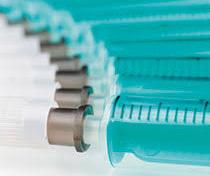
12. Gittard SD et al, “The Effects of Geometry on Skin Penetration and Failure of Polymer Microneedles”. J Adhes Sci Technol, 2013, Vol 27(3), pp 227–243.
13. Ma G, Wu C, “Microneedle, bio-microneedle and bio-inspired microneedle: A review”. J Control Release, 2017, Vol 251, pp 11–23.
14. Roxhed et al, “PenetrationEnhanced Ultrasharp Microneedles and Prediction on Skin Interaction for Efficient Transdermal Drug Delivery”. J Microelectromech Syst, 2007, Vol 16(6), pp 1429–1440.
15. Aoyagi S, Izumi H, Fukuda M, “Biodegradable polymer needle with various tip angles and consideration on insertion mechanism of mosquito’s proboscis”. Sens Actuator A Phys, 2008, Vol 143(1), pp 20–28.
16. Izumi H et al, “Realistic imitation of mosquito’s proboscis: Electrochemically etched sharp and jagged needles and their cooperative inserting motion”. Sens Actuator A Phys, 2011, Vol 165(1) pp 115–123.
17. Radhika C, Gnanavel BK, “Buckling analysis of polymer microneedle for transdermal drug delivery”. Mater Today Proc, 2021, Vol 46(9), pp 3538–3541.
18. Ma GJ, Shi LT, Wu CW, “Biomechanical Property of a Natural Microneedle: The Caterpillar Spine”. J Med Devices, 2011, Vol 5(3), Article 034502.
19. May M, “Why drug delivery is the key to new medicines”. Nat Med, 2022, Vol 28, pp 1100–1102.

Highlights Include:
• Meeting Regulatory Requirements in an Evolving Global Landscape
• Best Practices in Product Development, including Essential Performance Requirements, Control Strategies, and Lifecycle Management
• Preparing for Digitilization & the Future of Combination Product Development
• Recasting Organizational Culture & Governance for Combination Product Success
20. Zhang X et al, “Bioinspired Adhesive and Antibacterial Microneedles for Versatile Transdermal Drug Delivery”. Research (Wash DC), 2020, Vol 2020, Article 3672120.
21. Picchiottino D, “Brown and black dragon in water”. Unsplash, Aug 2021.
22. Castille A, “Black and red ladybug on white textile”. Unsplash, Sep 2020.
23. Zhou P et al, “Strategy for osteoarthritis therapy: Improved the delivery of triptolide using liposome-loaded dissolving microneedle arrays”. Int J Pharm, 2021, Vol 609, Article 121211.
24. Dixon AR, Vondra I “Biting Innovations of Mosquito-Based Biomaterials and Medical Devices”. Materials (Basel), 2022, Vol 15(13), Article 4587.
25. “Diamond Back Rattle Snake”. Pixabay, May 2016.
26. Bae W-G et al, “Snake fang-inspired stamping patch for transdermal delivery of liquid formulations”. Sci Transl Med, 2019, Vol 11(503), Article eaaw3329.


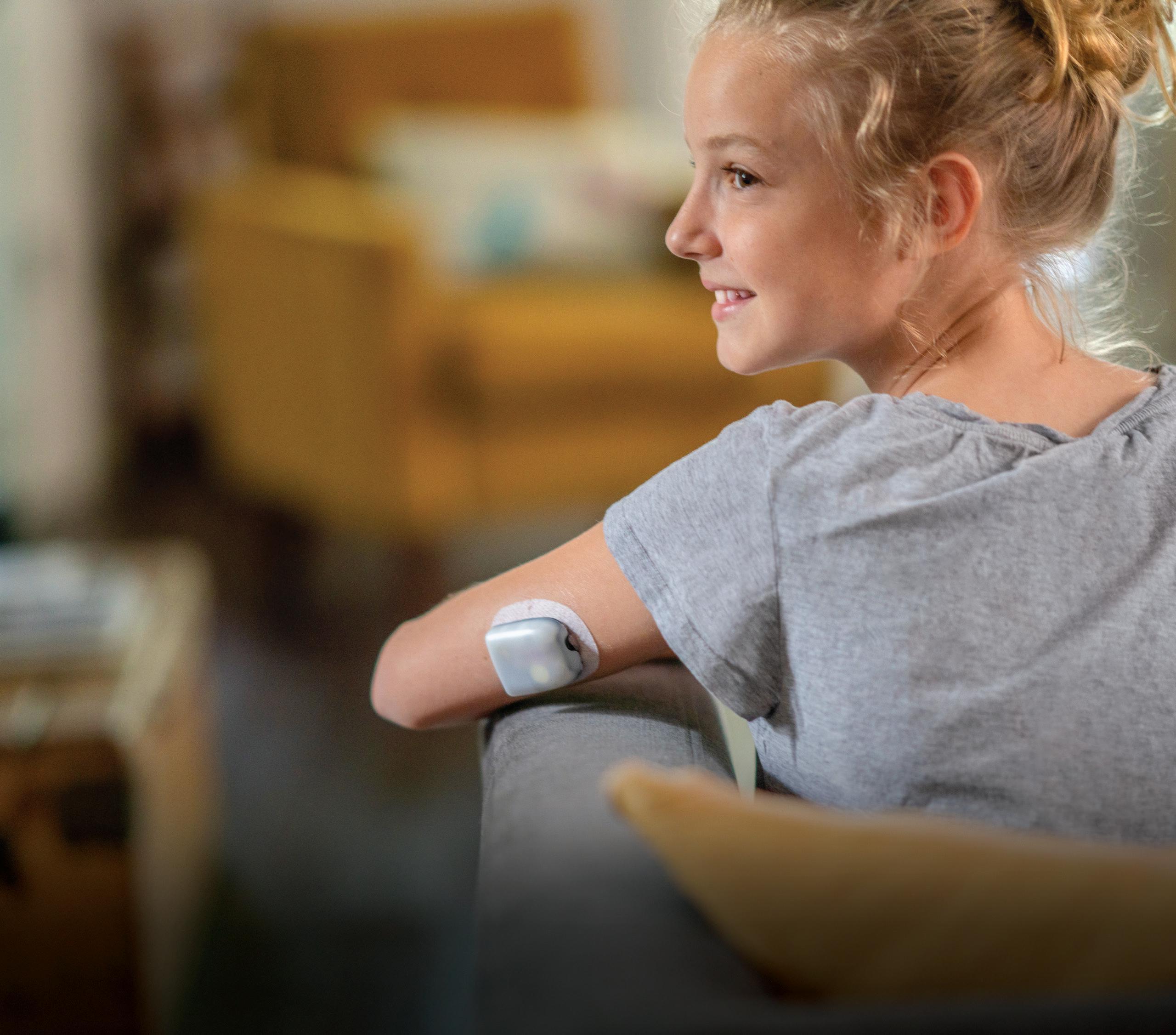
In this article, Bart van Oorschot, Chief Technology Officer, and Maarten Smit, Design Engineer, both at uPATCH, discuss the exciting potential of microneedle-based delivery systems to transform the drug delivery industry, the challenges faced by this technology and how the use of an applicator may be the way to overcome them.
Microneedle technology has the potential to revolutionise drug delivery, diagnostics, cosmetic procedures and a whole range of other applications. Microneedles are tiny needles, mounted on a plate and usually measuring less than a millimetre in length, which can be used to penetrate the skin or other biological membranes. Unlike traditional hypodermic needles, which can cause pain and discomfort, microneedles are designed to be painless and non-invasive and have the potential to significantly improve patient compliance.
Furthermore, microneedles are so small they cannot cause much in the way of damage or injury. This will result in fewer needlestick injuries and fewer infections. They also make it possible for patients to self-administer their therapy, which can have a transformative impact on the costs involved with the infrastructure needed for in-clinic administration by a healthcare professional.
Another benefit of using microneedles is the possibility to eliminate the need for cold chain storage and increase the shelf life of medical products. With most vaccines, for example, the need to keep them refrigerated is a serious strain on the cost and speed of distribution. The importance of this factor was painfully demonstrated during the covid-19 pandemic, in which the costs for distribution and infrastructure were incredibly high, not to mention the impact felt by countries that lack adequate
medical infrastructure for large-scale vaccination due to the high costs involved. The potential of microneedle technology has not gone unnoticed. Recently, some of the largest non-governmental organisations – the WHO, Bill & Melinda Gates Foundation, Gavi, PATH and UNICEF – have joined forces to develop a single integrated framework to prioritise vaccine product innovations and to drive innovations forward called the Vaccine Innovation Prioritisation Strategy (VIPS).1 VIPS ranked microneedle technology as the highest priority among drug delivery technologies, considering them to be truly “transformational” innovations that have the potential to overcome many of the barriers to immunisation identified by low- and middle-income countries.
Bart van Oorschot Chief Technology OfficerT: +31 6 8111 5745

E: bart.vanoorschot@upatch.nl
Maarten Smit Design Engineer

T: +31 6 5086 0213
E: maarten.smit@upatch.nl
uPATCH BV
Molengraaffsingel 12 2629 JD Delft Netherlands upatch.nl

“VIPS ranked microneedle technology as the highest priority among drug delivery technologies, considering them to be truly ‘transformational’ innovations that have the potential to overcome many of the barriers to immunisation identified by low- and middle-income countries.”
Before microneedles can be used for medical purposes, however, there are a couple of challenges that must be met, one of which is the certification of a complete drug delivery product. It is important to use the final drug delivery method in clinical trials early on. The final efficacy of the medication will be of the utmost importance in these trials, and a key factor that might influence the efficacy is the proper insertion of the microneedles into the skin. If the microneedles are not inserted correctly, it may result in the drug not being delivered to the intended target, leading to reduced efficacy, or even failure, of the treatment. The importance of consistent and effective application was underlined by the rejection of the clinical trial results of Qtrypta (zolmitriptan), a migraine medicine developed by Zosano Pharma (CA, US),2 which ultimately led to the company declaring bankruptcy.3 Qtrypta was rejected because the API exposure levels were too inconsistent.
Additionally, the small and non-invasive nature of microneedle technology also provides a serious challenge to consistent delivery. This is because, in the
Research conducted by the University of Leiden (Netherlands) demonstrated the difference in consistency of microneedle
Probably the most important factor to control is the velocity of the impact when the microneedles hit the skin or the force with which the microneedles are pressed into the skin, depending on which of the two primary methods of insertion is being used. Impact application is more effective but requires a more elaborate applicator, which makes it more suitable for a reusable applicator (Figure 2). On the other hand, when sufficient pressing force can be delivered to make sure that the microneedles penetrate consistently and effectively, a single-use applicator can be

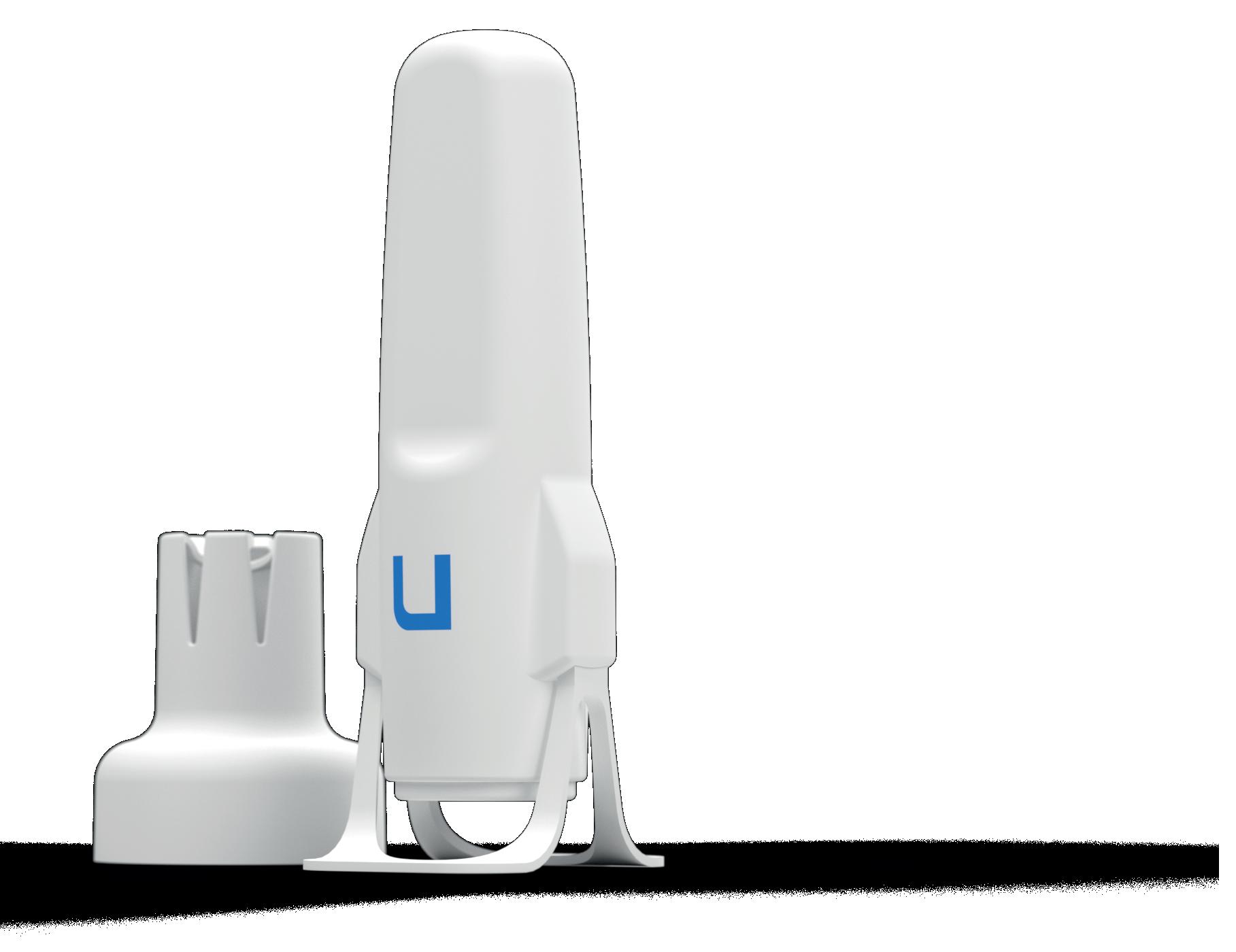
The researcher Mara Leone investigated how the impact velocity or pressing force with which the microneedles are inserted directly relates to the efficiency of the She inserted six different models of microneedles with varying velocities and pressing forces. Figure 4 shows that these different models have different ideal insertion parameters. By determining the parameters that create the most optimal penetration


“The variation in penetration efficiency for manual application varied from about 30%–80% whereas, when the subject used an applicator, the penetration efficiency was about 100% practically every time.”Figure 2: The uPATCH™ Plus, a patented reusable applicator that enables any user to reload the device with a new microneedle patch and consistently and effectively apply it to their skin.
efficiency for a specific model of microneedles, the applicator can be optimised accordingly, ensuring the ideal impact or force with as little strain on the user as possible.


Optimising the parameters for microneedle insertion is a critical step in minimising the impact on the user’s skin and avoiding undesirable outcomes, such as redness, inflammation or bruising. Not only is this important for enhancing the user’s experience, but it is also crucial for ensuring the success of clinical trials. For instance, in the clinical trial conducted by Zosano Pharma, more than 95% of participants experienced adverse effects at the application site.6 By identifying and using the most optimal parameters for microneedle insertion, the user experience can be enhanced and the efficacy of clinical trial products improved.
As the saying goes, “Variety is the spice of life”, but this variability can be a challenge when it comes to microneedlebased drug delivery. Human beings come in all shapes, sizes and colours, and these differences can greatly affect the efficiency of microneedle penetration. Age, sex, ethnicity and even body fat percentage can all play a role in determining how well microneedles penetrate the skin. However, with the uPATCH microneedle applicator, this variability is taken into account. The device includes legs that gently push on the skin to stretch it out, ensuring consistent penetration efficiency regardless of the individual patient’s physical characteristics. A patch is then applied to keep the skin in position, allowing the microneedles to remain in the skin for as long as necessary (Figure 5). This innovative approach helps to eliminate variability and optimise microneedle-based drug delivery.

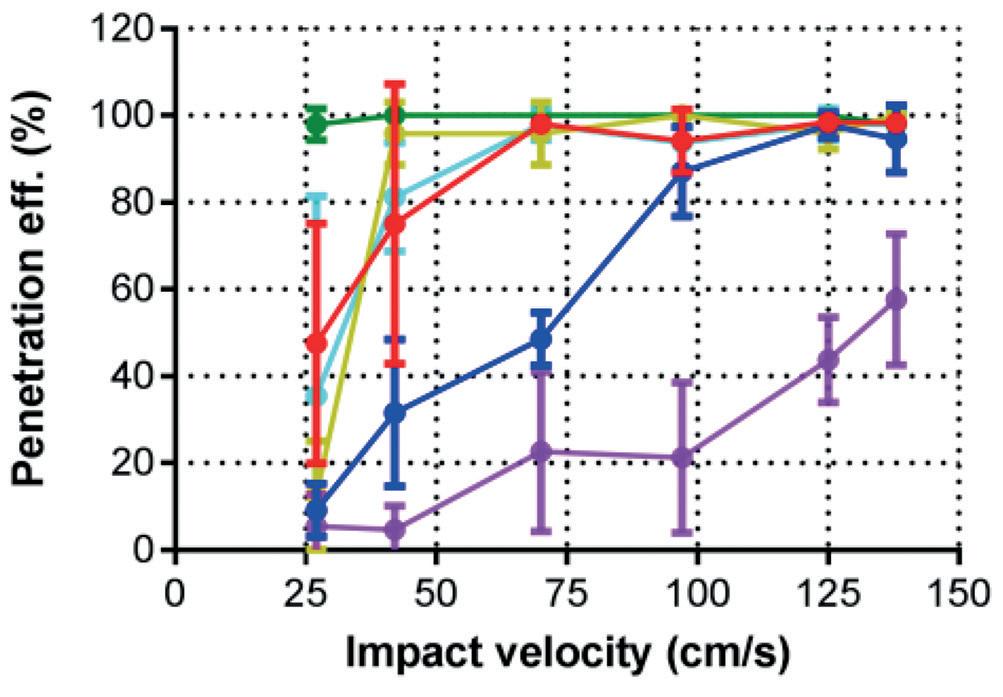
The development of a reliable and effective microneedle applicator has the ability to unlock the full potential of microneedle technology and revolutionise drug delivery. By eliminating the need for cold chain storage and bringing the
point of care directly into the user’s home, this technology can significantly reduce distribution costs and improve access to healthcare. The potential of microneedle technology is vast and, by harnessing its power, the drug delivery industry can create a more equitable and accessible healthcare system for all. With continued research and
development, it is possible to look forward to a future where, regardless of location or socioeconomic status, drug delivery is available for every person on Earth.
uPATCH specialises in the research and development of microneedle applicators. uPATCH was founded by Bart van Oorschot and Koen van der Maaden. During his PhD on microneedle application, Dr van der Maaden discovered that properly piercing microneedles into the skin was paired with a lot of issues. This is where Dr van der Maaden contacted product designer
and high school friend, Mr van Oorschot. This collaboration was the beginning of their mission to make end-user microneedle applicators that can make drug delivery available for everyone.
1. “The Vaccine Innovation Prioritisation Strategy (VIPS)”. Gavi, Jun 2021.
2. Kansteiner F, “Zosano presses on after FDA rejects Qtrypta migraine patch”. Fierce Pharma, Oct 2020.
3. Taylor NP, “Zosano goes bankrupt after FDA rejects migraine drug delivery patch”. Fierce Pharma, Jun 2022.
4. van der Maaden K et al, “Impact-insertion applicator improves reliability of skin penetration by solid microneedle arrays”. AAPS J, 2014, Vol 16(4), pp 881–684.
5. Leone M et al, “Universal Applicator for Digitally-Controlled Pressing Force and Impact Velocity Insertion of Microneedles into Skin”. Pharmaceutics, 2018, Vol 10(4), Article 211.
6. Nahas SJ et al, “Long term safety, tolerability, and efficacy of intracutaneous zolmitriptan (M207) in the acute treatment of migraine”. J Headache Pain, 2021, Vol 22(1), Article 37.
Bart van Oorschot built up his knowledge and experience in engineering, design and building healthy companies during his study as a Strategic Product Designer in Delft (Netherlands). After concluding his studies, he gathered further technical insights by working at an engineering company and a design firm. After this, he co-founded uPATCH together with Koen van der Maaden.
Maarten Smit started as a Design Engineer at uPATCH after completing his Mechanical Precision Engineering and Industrial Product Design BSc. His experience in designing complex mechanical devices and user-centred design in the healthcare sector is a critical factor in the successful creation of the company’s microneedle applicators.
Quote ONdrugDelivery and save $100
PharmaED’s
Canna Pharma 2023
Cannabinoid-derived Pharmaceutical Forum
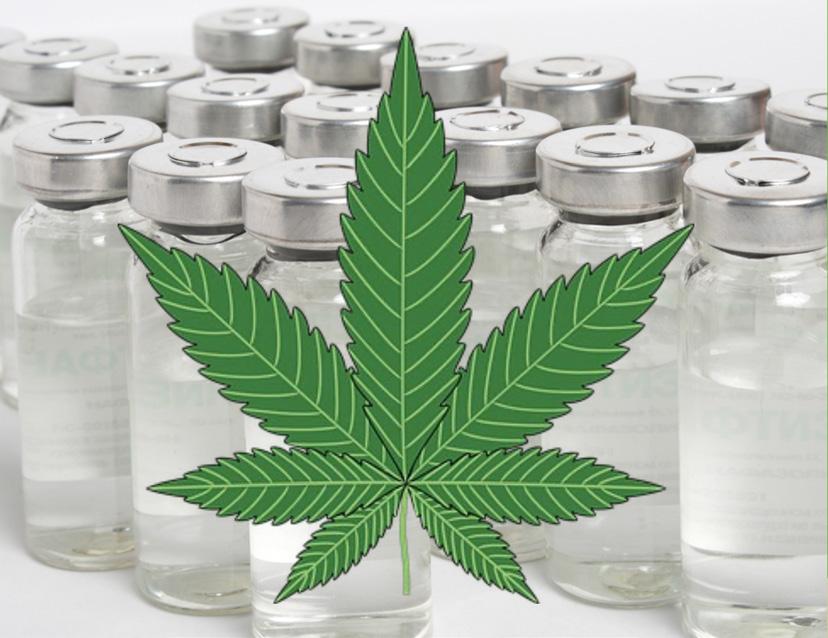
Philadelphia, PA
Conference Highlights Include:
• Discovering Novel Cannabis-& Cannabinoid-derived API’s
• Case Studies in Product Developement - From Lab Bench to Clinical Trials
• Regulatory Expectations for Cannabinoid Therapeutics
• Streamlining Clinical Trials for Faster Product Approval
• Overcoming Formulation Challenges
• Preparing for Commercial Scale-up & Product Launch
Featured Speakers Include:
• Cassandra Taylor, FDA (pending approval)
• Stacey Gruber, McLean Hospital/Harvard University
• Hunter Land, Biopharmaceutical Research Company
• Karolina Urban, Avicanna, Inc.
• Stephen Goldner, Pure Green Pharmaceuticals
• Aurelia DePauw, Tetra Bio-Pharma
For further info, contact Kim: (217) 721-5774, or email us: khubbard@pharmaedresources.com

In this article, Alina Su, Chief Executive Officer and Co-Founder of NovaXS Biotech, discusses the need for improved and optimised remote healthcare to meet current challenges in the industry, and introduces Telosis, the company’s patentpending connected needle-free injection device that is poised to provide answers to these challenges.
Imagine being diagnosed with a chronic illness and learning that the only way to treat it is to inject your medication, often over a course of years. This is the case for millions of people worldwide, who face the pain, stress and confusion related to needle injection therapies. That’s why NovaXS, a smart medical device company, set out on a mission to make medication selfadministration easy and accessible.
Fear, pain and stress are emotions that people living with chronic illnesses, such as diabetes, infertility, allergies and growth hormone deficiencies, face daily due to their needle injection treatments. NovaXS is creating a better way to treat patients with chronic diseases by building a smart needle-free injection device called Telosis, which will be able to sync with a smartphone app.
When it comes to treating chronic conditions with injectable medications, there are three common points of friction for patients:
1. Needle phobia : Needles can cause psychological fear and 80% of patients
would prefer an alternative to needles due to the pain and skin irritation they cause.
2. Complicated treatment management : Managing the whole self-injection process, from drug preparation to drug administration, can be complicated.
3. Lack of treatment monitoring: There is a clear informational gap between providers and patients in remote healthcare settings, potentially leading to an increased risk of administration errors and low therapy adherence.
A fear of needles, complicated treatments and lack of monitoring all add up to increased healthcare costs. According to the US Centers for Disease Control,1 one in four adults and two in three children have a strong fear of needles and, according to the National Association of Chain Drug Stores,2 50% of patients do not take medications as prescribed. According to a Patient Safety Network study,3 the error rate of selfmedication in at-home treatment is up to 33%, which means that up to a third of those who actually take their medications do not do it correctly. The consequences of this are real – pain, confusion, frustration, people not getting better and healthcare costs adding up.
Over the last year, NovaXS has developed patent-pending technology, with the hope of introducing potentially life-changing drug delivery methods for injectable medications to the market to help treat chronic diseases and improve adherence. NovaXS aims to make at-home remote treatment monitoring possible through an advanced needle-free drug delivery platform. The technology is
 Alina Su Chief Executive Officer and Co-Founder E: alinasu@novaxs.co
Alina Su Chief Executive Officer and Co-Founder E: alinasu@novaxs.co

“A fear of needles, complicated treatments and lack of monitoring all add up to increased healthcare costs.”
not exclusive to one type of treatment –NovaXS is developing solutions for patients with diabetes, infertility, growth hormone deficiencies, allergies and more.
The NovaXS drug delivery platform, Telosis, consists of a smart needlefree injection system that simplifies the medication self-administration process and improves remote treatment outcomes (Figure 1). Patients will be able to use Telosis to administer a narrow stream of medication without the need for a needle. The needle-free syringe uses liquid pressure to deliver medication into the subcutaneous or intramuscular space in just 0.3 seconds (Figure 2). The external motor design makes it possible for automatic medicinedrawing and air-expelling technology to simplify treatment preparation. The vertical alignment and safety lock prevent the medication from leaking and can minimise the pain associated with injections.


The medication administration process for NovaXS is:
• Draw medication from the vial
• Expel the air bubble in the cartridge
• Verify the dosage volume
• Administer the medication and track treatment progress with one simple click on the device.
Physicians will be able to track their patients’ progress and analyse injection
data to help patients make smarter health decisions. This all happens through integration with the Internet of Things (IoT) via a smartphone app. By including connectivity in this way, NovaXS can collect injection data, send patients reminders, monitor treatment progress and visual treatment calendars, and streamline communication between patient and
physician to maximise remote healthcare adherence and prevent complications (Figure 3). Additionally, NovaXS integrates the medication adherence data collected from Telosis with other remote patient monitoring devices, such as wearable devices and glucose monitors, which can provide patients with the tools they need to take early interventions for preventive care.
The smartphone app’s treatment calendar is generated based on the patient’s e-prescription and an injection reminder can be sent as a push notification to their phone prior to each injection. Injection data is collected by the device to inform healthcare providers of personalised treatment plans. Additionally, patients can communicate and report any side effects to their healthcare provider via their phone.
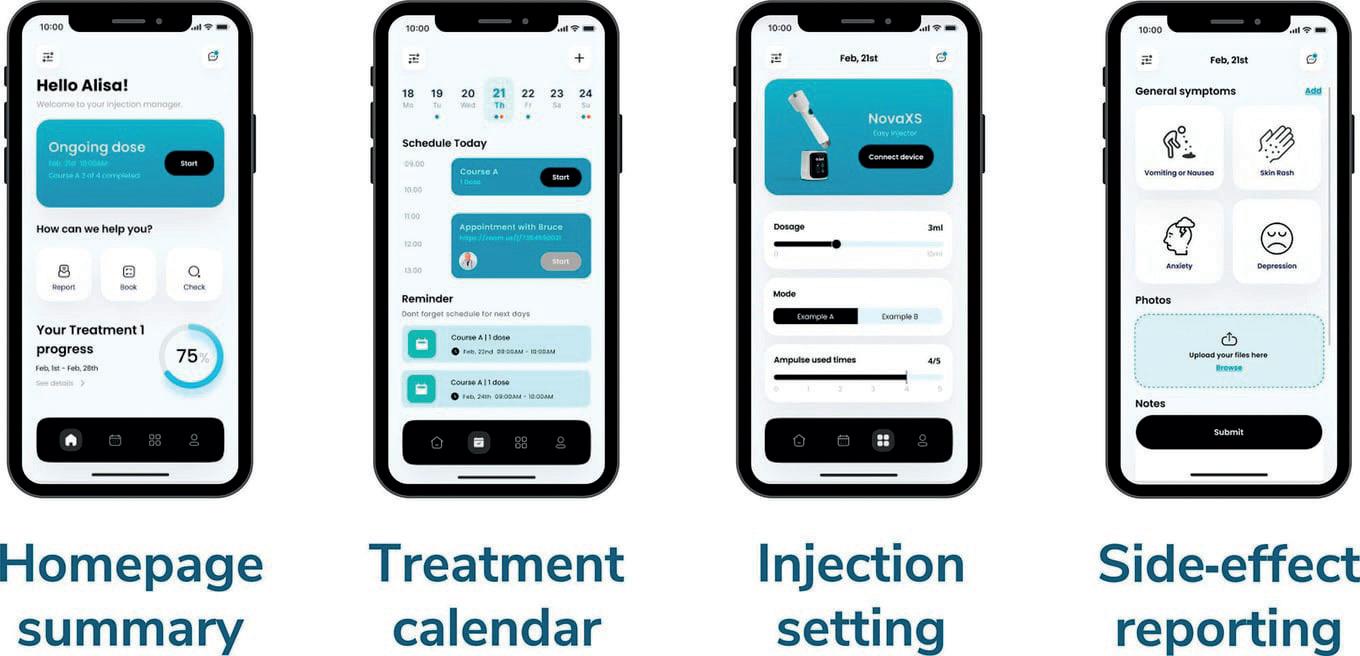
“The NovaXS drug delivery platform, Telosis, consists of a smart needle-free injection system that simplifies the medication self-administration process and improves remote treatment outcomes.”
“NovaXS integrates the medication adherence data collected from Telosis with other remote patient monitoring devices, such as wearable devices and glucose monitors, which can provide patients with the tools they need to take early interventions for preventive care.”

For chronic diseases that require frequent injections, remote healthcare is the clear trend for the future. Many companies are already taking steps to provide remote patient monitoring as part of their product offerings as they look to tackle staffing shortages and other challenges in today’s healthcare industry. However, NovaXS sees an opportunity for its platform to monitor and improve the adherence of these remote treatments. The company’s initial target therapeutic areas include diabetes, severe obesity, severe asthma, migraine, growth hormone deficiency and infertility, amounting to over 90 million patients in the US (Figure 4).

Looking towards the future, as insurance companies shift from payfor-visit to pay-for-outcome models, remote therapeutic monitoring codes are enabling the reimbursement of medical devices that collect remote therapy adherence data and deliver better care. Nowadays, over 21 million people undergo injection therapies. In 2021, the total available market size was valued at over US$620 billion (£502 billion).4 There is a clear trend that care providers and patients are looking for more convenient and effective delivery methods for
injectable treatments that improve adherence and the patient experience. To meet this need, NovaXS’s approach emphasises a patient-centric approach to making self-injections easy and centres remote healthcare optimisation.
NovaXS Biotech is on a mission to make medication self-administration easy, simple and convenient for patients. Led by a professional team of healthcare experts with a proven track record of fundraising over $40 million and five successful business exits, Nova XS is a smart medical device start-up focused on advanced drug delivery and patients’ long-term health. Its patent-pending technology, Telosis, is a needle-free drug delivery platform that
Alina Su, Chief Executive Officer and Co-Founder of NovaXS, is an innovator who is passionate about creating technology that makes healthcare equal and accessible to all. An entrepreneur and inventor, Ms Su holds six medical device patents in China and the US with three more patent applications pending. She is a PhD student studying Biological and Biomedical Science at Harvard Medical School and holds a BS in Bioengineering and Biomedical Engineering from the University of California, Berkeley. Ms Su has held researcher roles at Quantitative Biosciences Conboy Labs, UCSF Catalyst Program, Cellular Biomedicine Group and Serrento Therapeutics. She is the author of numerous scientific publications.
allows patients to self-administer biologics subcutaneously or intramuscularly and track long-term treatment progress through IoT integration and a software app. NovaXS is enrolled in the Berkeley SkyDeck, mHub MedTech Accelerator, USC Troylabs and Newchip Accelerator programmes and its investors include Baxter, EdwardElmhurst Health, Courtyard Ventures, mHub Product Impact Hub, Newgen Venture Partners and others.
1. “Needle Fears and Phobia –Find Ways to Manage”. Centers for Disease Control and Prevention web page, accessed Jan 2022.
2. Boylan L, “The Cost of Medication Non-Adherence”. National Association of Chain Drug Stores, Apr 2017.
3. “Medication errors statistics 2022”. SingleCare, Jan 2022.
4. “Injectable Drug Delivery Market Size, Share & COVID-19 Impact Analysis, By Device Type (Conventional Injectable, Pre-filled syringes, Autoinjectors, Pen Injectors, and Wearable), By Product Type (Freeze-dried Products, Injectable Sterile Products), By End User (Hospitals, Homecare Settings, Clinics, and Others), and Regional Forecast, 2020-2027”. Fortune Business Insights report, Jul 2020.

Stefan Hellbardt, PhD, is Vice-President Business Development and Scientific Affairs within Aptar Pharma’s Consumer Health Care division. As a trained biologist, he earned his PhD at the German Cancer Research Center (Heidelberg, Germany). Having held various positions in the pharmaceutical industry, Dr Hellbardt gained more than 12 years’ experience in clinical development before joining Aptar Pharma in 2011 to lead global business development for the dermal drug delivery, wound care and analgesics application fields. In this role, he has been instrumental in delivering Aptar Pharma’s expertise and services to both new and existing customers, as well as developing pharmaceutical products for topical dermal, transdermal, topical analgesic and wound applications. In his Scientific Affairs role, Dr Hellbardt has been leading a team of scientists since 2020, supporting customers with Aptar Pharma’s preservative-free products and material characterisation services.
QWhat is airless pharmaceutical packaging?
AAirless packaging systems are an increasingly prevalent form of dermal formulation packaging used by pharmaceutical and consumer product companies; their key functional property being that they protect their contents from exposure to air. This is important for many pharmaceutical formulations that would otherwise become unstable and degrade or break down.
At Aptar Pharma, our focus in this area has been on developing our Airless+ systems for semi-solid pharmaceutical formulations, such as lotions and gels. For these applications, in addition to protecting the formulation from exposure to air, it is also important that the packaging system can deliver a precise dose of formulation with a clean and convenient user experience. Aptar Pharma was the first company to create an airless dermal drug delivery system specifically
designed to meet the requirements of the pharmaceutical industry in highly regulated markets, such as Europe, the US and China.
At Aptar Pharma, we have designed our Airless+ systems using medical-grade resins in order to meet the requirements of prescription medicines. The need for the enhanced product evaluation and documentation that is able to satisfy regulators is increasingly important – it is a critical part of drug-device combination filings for customers.
QWhat are the trends in the airless pharmaceutical packaging market?
AOverall, we have seen a growing interest, from both our customers and their end consumers, in premium packaging solutions that provide enhanced dermal product protection. The global airless pharma packaging market is expected to reach US$1.3 billion (£1.1 billion) by 2025, with a 2019–2025 compound annual growth rate (CAGR) of 3.7% (Figure 1).1 This growth is expected to be the highest in Europe, North America and Asia Pacific, which currently account for more than 75% of the global airless pharmaceutical packaging market. Historically, most airless packaging applications have been for conventional small-molecule drugs and macromolecules, but we have started to see an increase in new product applications for novel treatments, such as microbiome therapies.
Figure 1: Airless product sales are expected to grow by over 3.7% until 2025 (CAGR).
Source: Market Research Future, Global Airless Packaging Market.
 Stefan Hellbardt, PhD, Vice-President Business Development and Scientific Affairs at Aptar Pharma, discusses the increasing demand for airless systems in the dermal drug delivery market, the advantages of these systems and Aptar Pharma’s own offering in this space, including its Airless+ packaging system and Extended Support services.
Stefan Hellbardt, PhD, Vice-President Business Development and Scientific Affairs at Aptar Pharma, discusses the increasing demand for airless systems in the dermal drug delivery market, the advantages of these systems and Aptar Pharma’s own offering in this space, including its Airless+ packaging system and Extended Support services.
QAre you seeing increased demand for Aptar Pharma’s Airless + packaging systems?
AOur Airless+ dermal delivery systems are absolutely growing in popularity, and we have identified several causes for this increased demand. The main advantage of airless devices is that they provide protection for the product formulation, which can be quite expensive; by eliminating any contact with air, it allows even air-sensitive products to be packaged in a multidose dispensing system that can deliver reliable dosing over time. Additionally, our Airless+ systems offer a premium appearance and potentially extend the in-use period compared with more commonly used tube packaging.
For the product manufacturer, our Airless dermal delivery systems are fillable on most current filling lines, which makes manufacturing more cost efficient and flexible to implement. Customers who fill their products into Airless+ packaging systems value product protection, flexible and easy manufacturing implementation, and product differentiation.
QIs the growing demand for airless packaging systems also influenced by end users?
AYes, patients and users have also started to discover the benefits of airless packaging systems, citing features such as ease of use and clean dose delivery as attractive benefits (Figure 2). Airless packaging can also extend the lifespan of a product, and the efficiency of the dispensing system means there is minimal waste of valuable product formulation. Another functional benefit of airless packaging systems is that their leak-resistant properties improve their portability, allowing them to be safely carried in a handbag or backpack. Patients can selfadminister a precise dose of semi-solid
formulation with 360° functionality; the dispenser can be oriented in virtually any direction when used.
Easy application to the last dose is a key feature of Aptar Pharma’s Airless+ dispensers. Patients don’t have to undergo the frustration of squeezing the last drops of their potentially costly cream or lotion from a conventional foil tube. Instead, the easily emptied Airless+ packaging system can be directly recycled into existing recycling streams without any additional separation of materials. Patients prefer our Airless+ systems because they offer both convenience and functionality.
QThere is a growing demand for more sustainable products and packaging. How is Aptar Pharma answering this demand with its device and service offering?
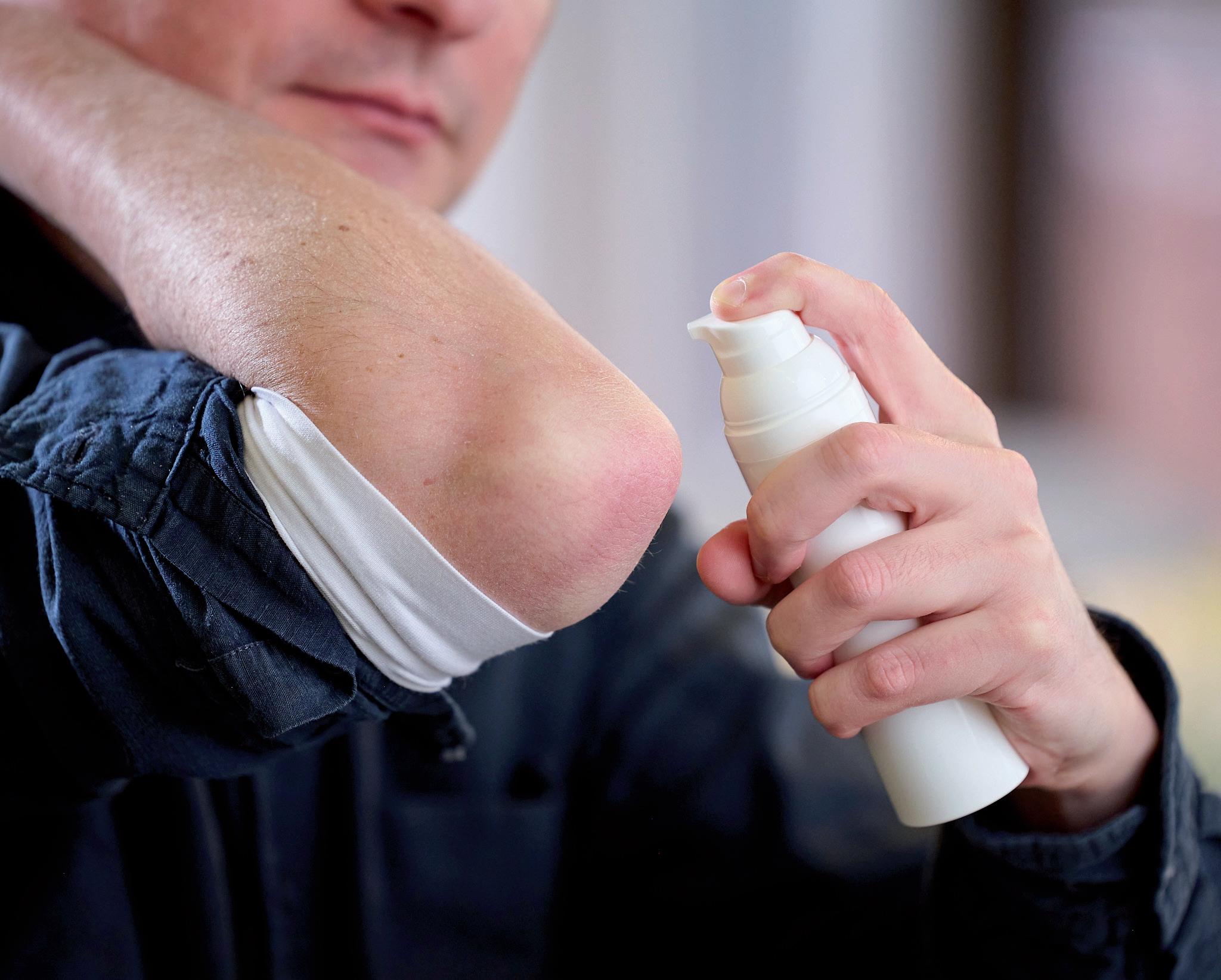
AIn a 2022 Aptar Pharma survey conducted with 840 German, French and American participants, 77% of respondents indicated that it was important or very important that the products they buy can be recycled. Additionally, 60% of respondents noted that they consider the recyclability of products when making purchase decisions, while 70% of respondents are willing to pay more for a product that they can recycle. Our Airless+ systems are designed to eliminate the inclusion of disruptive materials and metal parts. Instead, they only use polyolefin resin materials, which increases their
recyclability – noted by their “Class AAA” and 96–98% “excellent recyclability” rating by Institut cyclos-HTP (Aachen, Germany). Our Airless+ systems provide the functional efficiency and sustainability the market is currently demanding of packaging solutions.
QHow do the increasing demands of regulatory requirements impact the Aptar Pharma Airless+ product line?
AAs one of the world’s first developers of airless packaging systems for medical and consumer markets around the globe, we have an unrivalled understanding of the regulatory requirements affecting these products. In the US, they are considered drug-device combination products, and, in the EU, they are regulated under the Medical Devices Regulation. In both regions, we have a great deal of experience supporting customers with regulatory requirements. In China, we have found the Chinese regulatory requirements to be a little different, but we have established the needed China-FDA drug master files and are supporting our customers with the testing and respective regulatory documentation. They require some special tests and documentation that need to be filed in a dossier with the Chinese regulatory agency.
Aptar Pharma has a long history of successfully providing customers with regulatory support in major markets. Especially for smaller companies, who
Figure 2: Precise dosing, mess-free application and convenient handling are key advantages that patients appreciate in dermal administration.“Our Airless+ systems offer a premium appearance and potentially extend the in-use period compared with more commonly used tube packaging.”
may not have a large regulatory team, this support can be essential. With our larger customers, our regulatory expertise makes life significantly easier for them. Our customers know that Aptar Pharma has the experience and expertise to get them through the increasingly complex regulatory process, even for the latest drug-device combination product regulations, from the device perspective. Our original Airless+ systems have numerous market references and a proven track record of customer product approvals from major regulatory bodies. This regulatory knowledge helps us de-risk new drug development projects for our customers almost anywhere in the world.
QHow does Aptar Pharma support the customer journey to market for products when using Airless+ systems?
AAptar Pharma does more than just design and manufacture Airless+ devices. We offer customers a full range of Airless+ support services through our Extended Support (ES) offering; helping the customer with device selection and customisation to ensure that they have the right technology solution for their application. Our ES offering also includes access to our specialised analytical development and lab testing services. We can generate Airless+ device extractables data according to relevant USP/ISO requirements. Once the customer has the right device, we can offer specialised formulation development services to ensure that the formulation is fully optimised for the specific device. Finally, as I mentioned previously, we provide comprehensive regulatory support for customer products using our Airless+ systems.
QHow has the combination of Aptar Pharma devices, regulatory support and ES translated into success for your customers?
AWhile there are a number of airless packaging providers out there, Aptar Pharma’s offering is different in that we can offer a full, integrated package of services. Our customers know that we have proven successes supporting customer approvals using our Airless+ systems with a range of regulators. We have also started to create dossiers and drug master files with relevant authorities to accelerate the process further. Aptar Pharma’s airless systems have been used in more than 50 commercially marketed drug products.

With our ES offering, we can provide analytical and formulation development services around all Aptar Pharma devices. Customers have used Airless+ drug delivery systems in their drug market applications in the US, EU and China. Aptar Pharma contributes to product drug master files and dossiers specific to the Chinese regulatory requirements for drug product submissions. With Aptar Pharma’s Airless+ dermal drug delivery systems, customers know that they don’t have to manage complex drug-device combination product submissions on their own.
QHow is the Chinese market different from other markets and why is this market important for Aptar Pharma and its customers?
AAptar Pharma has had success in the EU and US markets with its airless and Airless+ packaging systems for some time. Our recent dossier filing in China represents a massive opportunity for Aptar Pharma to serve customers in a
huge new market. With the Chinese topical dermal drug market expected to reach $6.7 billion by 2030, with a 2019–2030 CAGR of 7%,2 China represents the largest market in the Asia-Pacific region. This large population will continue to have high demand for both prescription and consumer dermal products that require protective and precise airless packaging systems. This is as important for Aptar Pharma as it is for our customers wanting to launch differentiated products in this expanding market.
One challenge in China is that the market regulations are different from those in Western markets in certain ways, but we’ve leveraged our experience as a global device manufacturer to adapt to their requirements. We’ve created a marketspecific offering for our Airless+ packaging system exclusively for the Chinese market, called Airless+ CS. We’ve also started to move towards creating independent device dossiers that can be referenced in future drug submissions using Airless+ CS dispensing systems to accelerate the process and make submissions in China easier for our customers. Aptar Pharma retains ownership of the dossier, which can then be applied to additional customer submissions directly. These are all huge steps forward for us in a rapidly growing market.
QWhat future do you see for airless products and how will Aptar Pharma adapt to this future?
“Our recent dossier filing in China represents a massive opportunity for Aptar Pharma to serve customers in a huge new market.”
AAptar Pharma’s Airless+ packaging systems (Figure 3) continue to be an important area of focus for us. With increasing demand for semi-solid dermal formulations and an increasing need for secure delivery systems that protect the product, we’re continuing to invest in optimising our Airless+ drug delivery devices for regional market requirements. We are also continuing to improve the support services available to customers throughout their regulatory journey via our ES offering. We will continue to assess adding new product features, such as childresistant senior-friendly and digital health functionality, to enhance our product lines. We will also assess local production and sourcing initiatives to be closer to our customers and provide greater security of supply. Lastly, all our products will include sustainability initiatives that lead to technologies and services that have a reduced impact on the environment while still providing elite device performance. We expect that our Airless+ systems will remain at the forefront of functionality and sustainability in airless dermal drug delivery.
To learn more about Airless+ dermal drug delivery systems, visit: www.aptar.com/ products/pharmaceutical/airless-dermaldrug-delivery-systems
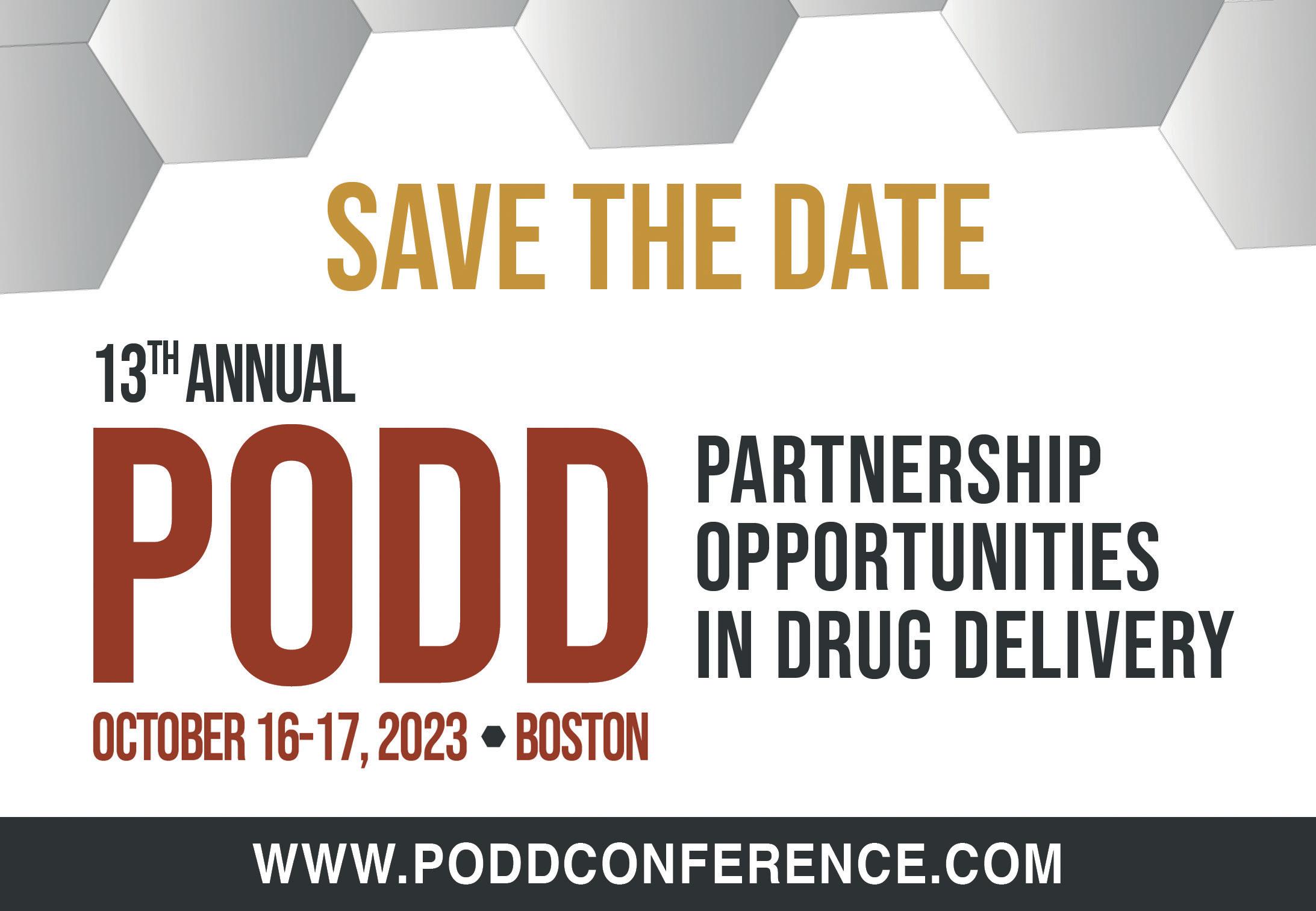
For pharma customers worldwide, Aptar Pharma is the go-to drug delivery expert – from formulation to patient –providing innovative drug delivery systems, components and active material solutions across a wide range of delivery routes, including nasal, pulmonary, ophthalmic, dermal and injectable. Aptar Pharma Services provides early-stage-tocommercialisation support to accelerate and de-risk the drug development journey. With a strong focus on innovation, Aptar Digital Health is leading the way in developing digital health solutions to help improve the patient treatment experience. With a global manufacturing footprint of 14 manufacturing sites, Aptar Pharma provides security of supply and local support to customers. Aptar Pharma is part of AptarGroup, Inc.
1. “Airless Packaging Market Outlook and Opportunities in Grooming Regions with Forecast 2027”. Market Research Future, Dec 2019.
2. “Topical Drug Delivery Market Report 2020–2030”. Visiongain, Oct 2020.
Dr Stefan Hellbardt Vice-President Business Development and Scientific AffairsAptar Pharma
Oeschlestrasse 54–56 78315 Radolfzell
Germany
www.aptar.com/pharmaceutical


Aptar Pharma’s Airless+ Technology platform is advancing dermal drug delivery to meet the growing market need for safety, user convenience and premium brand differentiation. Airless+ is made of 100% medical grade resins and offers the pharmaceutical solution for dermal drug products. The Extended Support of our Airless+ ES range fulfills current and future regulatory requirements such as EU MDR 2017/745, GSPR and US 21 CFR 820.30.
Designed for a more sustainable user experience, our Airless+ has been certified by cyclos-HTP for excellent recyclability.
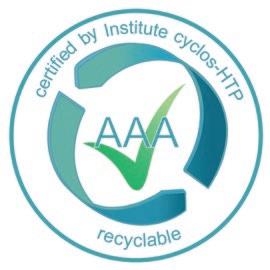
To partner with Aptar Pharma on your next dermal project, contact Dr Stefan Hellbardt, Vice President Business Development and Scientific Affairs, at stefan.hellbardt@aptar.com
From formulation to patient.
In this article, Marie-Christine Klein, PhD, Head of Development & Regulatory Affairs, Andreas Bilstein, PhD, General Manager, and Julia Krüger, Head of Business Development & Sales, all at URSATEC, discuss the effects of preservatives on the skin microbiome and consider new technologies that minimise the percentage of preserving agents used in cosmetic formulations.


The skin, which is the largest organ of the human body, has an enormous surface that provides a habitat for diverse micro-organisms of different domains of life: bacteria, archaea and fungi, but viruses are also present. The common theme in biology – striving for a balanced equilibrium or homeostasis – is key to health. By implication, impairments of this homeostasis result in pathologies. And what homeostasis or, more precisely, eubiosis means in the case of the skin microbiome depends on many factors and is not a one-solution-fits-all situation.
Diversity is the main characteristic of the skin microbiome. The composition of infants’ skin microbiome is defined by the delivery mode at birth. Over time, the diversity of the microbiota extends because of environmental influences. This need for resistance against environmental factors triggers an evolution of strategies for bacteria to survive.
For example, the body’s skin has different ecosystems within which the microbial composition significantly varies. There are sebaceous sites, like the forehead, behind the ear or the back, which are dominated by lipophilic Propionibacterium species and, in general, have low bacterial
diversity. Moist subset areas of the human body, such as the inner elbow or the sole of the foot, host mainly Staphylococcus and Corynebacterium species. Moreover, there are dry areas of the skin, such as the forearm or various parts of the hand, which are characterised by diversity, where Actinobacteria, Proteobacteria, Firmicutes and Bacteroidetes can be found (Figure 1).1 Furthermore, not only location but also age, body temperature and the immune system, as well as extrinsic factors like the climate and the use of antibiotics, determine the composition and characteristics of the microbiome and make it very individual. Astonishingly, when studying the forearms of six healthy adults, only a few wellrepresented genera could be found, and the main finding was a low-level interpersonal consensus.2
The term skin barrier unites different strategies that are used by nature to protect our bodies from external influences of various origins, which is a crucial task to fulfil. An
Head of Development & Regulatory Affairs

T: +49 0 6853 96199 26
E: klein@ursatec.com
Dr Andreas Bilstein

General Manager
T: +49 0 6853 96199 0
E: bilstein@ursatec.com
Julia Krüger
Head of Business Development & Sales
T: +49 0 6853 96199 21
E: krueger@ursatec.com
URSATEC GmbH
Marpinger Weg 4 66636 Tholey Germany
www.ursatec.com
“Diversity is the main characteristic of the skin microbiome.”
“PRESERVATIVE
Figure 1: The process flow of creating a preservative-free cosmetic product. (1) Preservative-free formulation concepts have the advantage of short INCI lists because no preservatives have to be harmonised according to their physicochemical properties. Both the bulk product (2) and the primary packaging (3) of the product need to be presterilised. In the case of semi-solid formulations, UHT technology is a gentle mechanism for bulk sterilisation when sterile filtration is not possible. The COMFORT® system combines airless technology with bacteriostatic surfaces and is delivered sterile. (4) Filling of bulk in the primary packing occurs under sterile conditions in a controlled environment. (5) Instead of tests for preservative effectiveness, the sterility of the product is tested for release. (6) The content of the cosmetic product stays sterile for the complete shelf life.

A well-balanced and functioning skin barrier is key to a healthier life. Therefore, perturbations in the skin barrier are associated with several pathologies. An example of a connection between pathology and an unbalanced skin microbiome is acne. In acne patients, the loss of diversity of different Cutibacterium acnes phylotypes is associated with the pathogenesis of the disease. Strains that trigger the innate immune system and skin inflammation are over-represented in those kinds of patients.3
obvious way to separate two distinct environments is by building a wall. This wall, as the first barricade against pathogenic microorganisms, consists of multiple fine layers of epidermal keratinocytes. These are cells that are terminally differentiated and create a nearly impenetrable protective layer. Interestingly, this physical barrier is safeguarded by skin microbiota that secrete components that stabilise the lipid structure.
This leads us to chemical components that contribute to the skin barrier. Both the epidermis built by the host and the skin microbiome release lipids and acids as protective shields against intrusion. Another good example is chemicals released – especially by bacterial inhabitants of sebaceous regions – to produce free fatty acids that are responsible for the characteristic low pH value of the skin. Fatty acids inhibit the growth of pathogenic micro-organisms and enhance skin immunity. Again, balanced homeostasis leads to selective inhibition of pathogenic Staphylococcus aureus, whereas commensal species of Staphylococcus and Corynebacterium keep growing under these conditions. Although there is more awareness of the gut microbiome, the skin microbiome also stimulates immune responses to protect against cutaneous and systemic infections, and this adds another layer of complexity to the skin barrier function. And, last but not least, the skin microbiome itself can also defend against pathogens, for example, by disrupting their communication system or inhibiting their growth in a biofilm manner, as in the case of Staphylococcus aureus that is tackled by Staphylococcus epidermidis. 3 This competitive relationship between the skin microbiome and pathogenic micro-organisms is important for maintaining homeostasis.
Moreover, a well-researched disease in the context of microbiome dysbiosis is atopic dermatitis (AD). Between 1% and 10% of adults suffer from AD, and 15%–20% of children have a widespread chronic multifactorial inflammatory skin pathogenesis characterised by dysfunction of the skin barrier. AD lesions display an increased abundance of Staphylococcus aureus next to a generally decreased microbiological diversity.
The extent of Staphylococcus aureus and its secreted chemicals can disrupt the tightly balanced homeostasis so that the pathogen can reach deeper layers of the stratum corneum and interfere with the host’s immune system, which contributes to the pathogenic phenotype.3 In fact, AD patients display an almost two-fold increase in skin absorption of different chemicals, including irritants and contact allergens.4 Among these, contact allergens, preservatives beneath fragrances, emulsifiers, vehicle components and sunscreen agents contribute to contact hypersensitivity. About 6% of Europeans display hypersensitivity to preservatives, which is significant, given the fact that many personal care products contain preservatives and their widespread use.4
Preservatives are being used to protect the cosmetic preparation against microbiological contamination throughout the shelf life of a cosmetic product. Contamination can originate from air germs during bulk production and filling of the product, and/or after the cosmetic is opened and the contents are exposed to air or come into contact with skin.
“The competitive relationship between the skin microbiome and pathogenic micro-organisms is important for maintaining homeostasis.”
As long as the formulation has nutritive properties, which holds true for most cosmetic formulations with water activity, the microorganisms benefit from the nutritive properties and start growing and metabolising. This culminates in the cosmetic product losing its claimed properties and causing health-threatening consequences to the product user.
Therefore, the need for microbiological-safe cosmetic products is the highest priority, which stimulated the career of preserving agents a long time ago. As already discussed, the drawback to using preservatives and preserving agents is the high potential for contact hypersensitivity. In this context, preservatives range second (58%) after fragrances for contents with allergic potential throughout the main cosmetic categories.5 There is also a negative correlation between preservatives and commensal species of the skin microbiome, such as S. epidermidis, whose numbers are reduced following the usage of preservatives, such as phenoxyethanol, parabens and methylisothiazolinone.6,7 This negative impact on the skin microbiome is exacerbated by the fact that, even after regular showering, personal care and hygiene products have been demonstrated to stay on the skin for weeks after their first use, which has an enormous impact on the bacterial ecosystem of the user.8
Taken together, the skin microbiome and its balance between opportunistic and commensal species are endangered by the use of preservatives, which should add a layer of consciousness for the cosmetic user and fuel the development of alternative solutions in the cosmetic industry.
The development of airless dispensers was the first step in the right direction to realise new and innovative product concepts, minimising the percentage of preserving agents used in cosmetic formulations. We need to understand that all ingredients that inhibit the growth of germs are preserving agents and not only those that use this function primarily. Pentylene glycol, several types of alcohol
or even magnolia extract, for example, can be used in cosmetic products in Europe for preserving the formulation without the need to declare them accordingly (EC Regulation 1223/2009, Annex V). If those kinds of formulations are then filled in innovative airless packaging solutions, the consumer would understand the claim “preservative free” as being true, which is not the case, unfortunately. With most of the currently used packaging solutions and respective manufacturing processes, a claim of “100% free from preservatives” cannot be achieved.
New technologies are necessary to provide a true alternative for preserving ingredients in cosmetics. The combination of high-end technologies in dosage systems, such as the COMFORT® system, and innovative manufacturing conditions, such as the “ultra high temperature” (UHT) process, will become the gold standard for “real” preservative-free products in the cosmetic industry.
The COMFORT® system is an airless dosage system for dispensing very sensitive liquid or semi-solid formulations. It makes it possible to avoid any kind of preservatives, even after the product has been opened, as the special design of the system prevents contamination. Both a microbiologically tight closing valve and the bacteriostatic effect of the surfaces used in the nozzle guarantee perfectly protected contents. A microbiologically tight valve is technically very complex regarding the minimum permissible manufacturing tolerances of the individual components and, physically, requires a high opening pressure because the smoother the valve for the product outlet, the easier it is for germs to overcome the valve and enter the bottle.
The bacteriostatic effect is achieved by a silver-based additive. This prevents biofilm formation on the surface. Additionally, the flexible airless inner bag, which folds when the vacuum emerges due to pressing the pump, dispenses the contents without being in contact with any oxygen. This leads to proven perfect protection of the preservative-free contents. The innovative UHT technology used during the aseptic manufacturing process rounds off modern technology to provide products that are 100% free from preservatives. UHT sterilisation is the process of heating milk or cream to temperatures exceeding 275°F (135°C) for one or two seconds, then packaging it in a hermetically sealed container.
Eliminating dispensable ingredients like preservatives and, at the same time, guaranteeing safety against microbial contamination has a winning effect on the skin microbiome. Impairments in terms of species diversity, which directly correlate with the skin barrier, can be avoided. The same is true for a substantial proportion of substances prone to contact hypersensitivity. The term “less is more” could not be more applicable to this topic.
URSATEC was founded in 1993 to accomplish one mission: the establishment of preservative-free applications based on its proprietary packaging systems in different application areas, primarily nasal, dermal, buccal and otological fields. Having sold almost two billion units within the last 30 years, URSATEC systems are widely established. URSATEC is consistently expanding its business and
“The need for microbiological-safe cosmetic products is the highest priority, which launched the career of preserving agents a long time ago.”
“Both a microbiologically tight closing valve and the bacteriostatic effect of the surfaces used in the nozzle guarantee perfectly protected contents.”
offers a full development service, dosage systems, primary packaging materials, filling services for OTC and Rx applications to the healthcare industry, and also stands for sophisticated cosmetic products and food supplements that completely lack preserving ingredients.
1. Grice E, Segre J, “The skin microbiome”. Nat Rev Microbiol, 2011, Vol 9(4), pp 244–253.
2. Gao Z et al, “Molecular analysis of human forearm superficial skin bacterial biota”. Proc Natl Acad Sci USA, 2007, Vol 104(8), pp 2927–2932.
3. Lee H, Kim M, “Skin Barrier Function and the Microbiome”.
Int J Mol Sci, 2022, Vol 23(21), p 13071.
4. Németh D et al, “Preservative Contact Hypersensitivity among Adult Atopic Dermatitis Patients”. Life, 2022, Vol 12(5), p 715.
5. Travassos A et al, “Non-fragrance allergens in specific cosmetic products”. Contact Dermatitis, 2011, Vol 65(5), pp 276–285.
6. Wang Q et al, “Effect of cosmetic chemical preservatives on resident flora isolated from healthy facial skin”. J Cosmet Dermatol, 2019, Vol 18(2), pp 652–658.
7. Pinto D, “Effect of commonly used cosmetic preservatives on skin resident microflora dynamics”. Sci Rep, 2021, Vol 11(1), p 8695.
8. Bouslimani A et al, “The impact of skin care products on skin chemistry and microbiome dynamics”. BMC Biol, 2019, Vol 17(1), p 47.
Marie-Christine Klein, PhD, is a biochemist by training and joined URSATEC in 2019. She is head of the development team, which is focusing on innovative developments in combination with URSATEC application technology, for example, in preservative-free cosmetics.
Andreas Bilstein, PhD, has been the Managing Director of URSATEC since August 2020. He is a biologist with more than 15 years of experience in developing preservative-free products for various applications.
Julia Krüger, a biotechnologist, combines her scientific background with excellent skills in B2B and B2C marketing and sales. She joined the OTC healthcare industry in 2005 and gave direction to the development and sales of substance-based medical devices and cosmetic portfolios. Ms Krüger has been part of URSATEC since December 2020, and is head of the business development and sales department.
We accompany our customers as a reliable and competent partner throughout the entire value chain of a product. Instead of coordinating various suppliers and contract development and manufacturing organizations, you have all the advantages of a single contact partner.
We provide innovative primary packaging materials and combine in-depth development with approval know-how and high-quality contract manufac-

